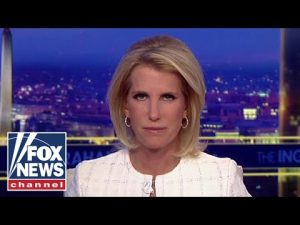It seems like the Trump administration cannot stop wowing everyone with its audacious strategies that promise a “golden age” for America. According to their plan, the road to this golden era is paved with tax cuts, deregulation, and tariffs. Yes, that’s right, tariffs, the often-maligned trade tool, are being painted as a sort of magical elixir that will drive back foreign competition and boost domestic manufacturing. While opponents love to label tariffs as dangerous tax increases, proponents argue they’ll shift production from overseas back to the good ol’ U.S. of A., where it belongs.
The administration’s playbook claims that slapping hefty tariffs, like the proposed 25% on foreign cars, will not just shoo factories back to our shores, but it will also spark a labor boom. Can you imagine that? It’s like asking American workers to put on their hard hats and get ready for an explosion of job opportunities. Of course, some people express concern that the U.S. auto industry might not have the capacity to handle all this potential growth, but that’s hardly the point, right? It’s about getting ready to build new factories and invest in America’s workforce, all while making foreign luxury cars even less affordable for the average Joe.
And what about the critics who fear these tariffs will backfire, hurting American consumers and businesses? They might say these measures are just a tax increase in disguise. But nothing that a little creative economics can’t spin positively. The tariffs, they argue, give room for cutting other taxes, which supposedly balances everything in this master plan. So, while the snooty elites may have to shell out more for their cherished foreign automobiles, regular folks will be busy benefitting from all these new jobs. Genius, right?
Of course, unleashing tariffs isn’t just about economy and jobs; it plays into a broader geopolitical game, too. Take, for example, the threats of tariffs as pressure tactics against Russia and Iran. The administration’s bravado is on full display here, brandishing economic power like a weapon to influence global politics, from Ukraine to the Middle East. They’re betting that the threat of severe economic penalties will coerce these governments into submission. It’s classic “Art of the Deal” bravado—stepping into negotiations with a tank, hoping to come out with concessions.
In the end, these policies present a high-stakes gamble. Will they materialize into a grand economic boom echoing through the history books? Or are they just another chapter in a saga of controversial strategies with uncertain outcomes? Time will tell. But one thing’s for sure: under the Trump administration, the playbook isn’t just about managing the status quo. It’s about bold, albeit risky, moves that aim to shake up the system, bringing manufacturing home, and attempting to recalibrate decades-long trade dynamics. If nothing else, it’s an economic experiment that promises to keep everyone on their toes.







